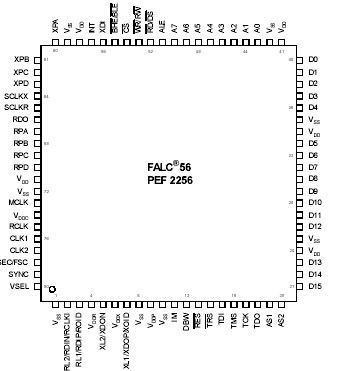PEF2256: Features: • High-density, generic interface for all E1/T1/J1 applications• Analog receive and transmit circuits for long-haul and short-haul applications• E1 or T1/J1 mode selectab...
floor Price/Ceiling Price
- Part Number:
- PEF2256
- Supply Ability:
- 5000
Price Break
- Qty
- 1~5000
- Unit Price
- Negotiable
- Processing time
- 15 Days
SeekIC Buyer Protection PLUS - newly updated for 2013!
- Escrow Protection.
- Guaranteed refunds.
- Secure payments.
- Learn more >>
Month Sales
268 Transactions
Payment Methods
All payment methods are secure and covered by SeekIC Buyer Protection PLUS.

 PEF2256 Data Sheet
PEF2256 Data Sheet







